It seems to happen every year. One or two of your brass safety cover anchors either won’t come up, or they won’t go down – and some of them just spin in the hole.
Struggling with pool cover anchors is no fun, and leads to scraped knuckles and broken fingernails. Here are the top 3 problems with brass pool cover anchors, and solutions to fix or replace.
Types of Pool Anchor Covers
Stickers
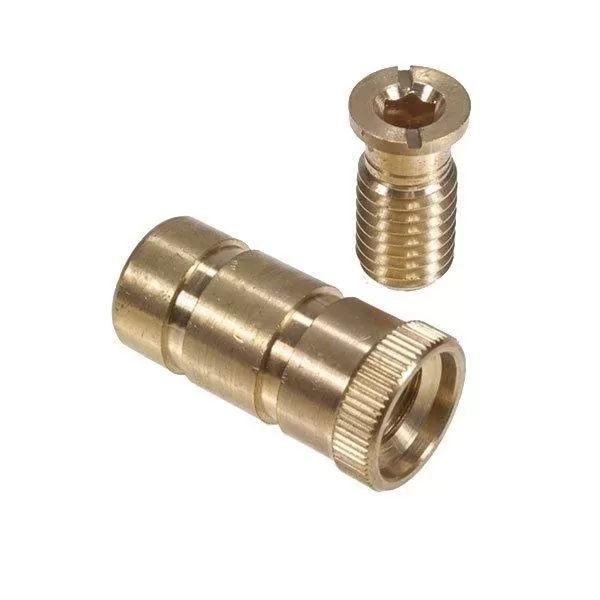
Sticker anchors are pool cover anchors that won’t turn up, and or won’t turn down. The cause can be pressure around the top few threads, when an anchor is pounded into a hole that is just millimeters too small. This can happen when using a worn drill bit, but can be overcome during installation.
Another cause of stickers (stuck anchors) is tiny bits of sand or concrete particles in the threads. This can be avoided by regularly flushing out and using a light oil (like WD-40) on the safety cover anchors.
A third cause of sticky and stuck anchors is stripped hex holes. The edges of the hexagonal hole in the center of the anchor round over time, and can get to a point where the hex key spins. For stripped hex holes, insert a flathead screwdriver into the hole and spin until the hex lifts. If that fails, use Vice-Grips to clamp down on the top of the head and raise it slightly.
Spinners
Spinners are safety cover anchors that don’t have any grip left and just spin in the hole. Remedy this problem by re-tamping the anchor into the deck.
To re-tamp a cover anchor into the ground, remove the head from the body, insert the tamping tool into the body, and hit it a few times with a heavy hammer. If you don’t have a tamping tool, or want a faster method, drop a nickel or dime over the head of the anchor, and hit it with a heavy hammer. Avoid hitting the head of the anchor directly with a hammer, which can warp the shape of the hex hole and the top edge, causing more problems.
3 Top Pool Anchor Problems
1. Anchor Hex Hole is Stripped Smooth
If the hole for the hex key is smooth, you won’t be able to turn it fully. Make sure it’s not your hex key that’s rounded smooth, or stripped. Then, clear out any dirt or debris in the hole.
- If your anchor hex key hole is stripped, you can use a large flat head screwdriver – but not for the slots on either side of the hole. Tap the screwdriver head into the hex hole with a hammer, deep enough to “bite” into the edges. Then use pliers to turn the screwdriver handle.
- If the insert is raised, grab the edge with a pair of locking pliers, and the anchor can usually be turned, if it is not also seized up. If it can be fully removed, replace the anchor by tamping a new brass anchor into the hole.
Brass Anchor Removal Kit
A more permanent solution would be to replace a stripped cover anchor with a complete new brass anchor. Using our brass anchor removal kit, drill out the stripped hole with the drill bit, cut threads into the hole with the tap, assemble cylinder, plate, nut and bolt, and just simply turn the nut with a wrench to easily raise a broken cover anchor from the concrete.
2. Pool Cover Anchor Won’t Turn
When the cover anchor is seized and won’t go up, or won’t go down. This can be caused by hardened grit in the threads, and/or from the outer body of the brass anchor being bent during installation into a poorly drilled hole.
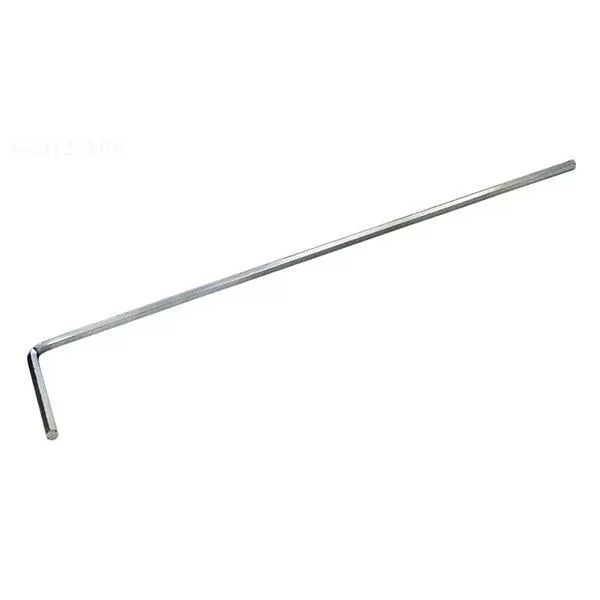
- Cover Hex Keys: If your cover anchor key is twisting and bending with the force, try a Tee-handle type of 1/4″ Hex Key, which can provide more leverage or torque. If you are using the standard L-Handle Hex Key, you will get more turning force when you insert the short end of the Hex Key into the cover anchor hole. Also, be sure that your Hex Key is not worn smooth on the tip. You can cut with a hacksaw and smooth on the concrete, to re-tip the end. You can also cut the Hex Key and use it with a power drill.
- Lubrication will usually help. WD-40™ or 3-in-1™ oil, or other lightweight, penetrating oil applied between the body and the insert. Allow a few minutes to soak in before attempting to turn it again. Lubricate the anchor if it will only turn a few turns before getting stuck again. A paper towel with a hole will absorb over-spray, which can darken concrete or damage painted pool decks.
- Rock it back and forth. When turning a stuck pool cover anchor, turn as far as you can in one direction, then reverse, and back in the original direction. An insufferable task, yet it helps to break up the grit in the threads. Grab the edge of the partially raised pin with locking pliers or a vice-grip. Use the pliers as a lever, and turn it back and forth.
3. Entire Cover Anchor Spins
Only the top 1/8″ of the brass pool cover anchor actually holds the anchor in the hole. When the anchor is tamped into the 3/4″ hole, the 13/16″ width of the anchor collar press fits into the hole. When the hole is too big, or the anchor was not tamped in place firmly enough – we get a spinner!
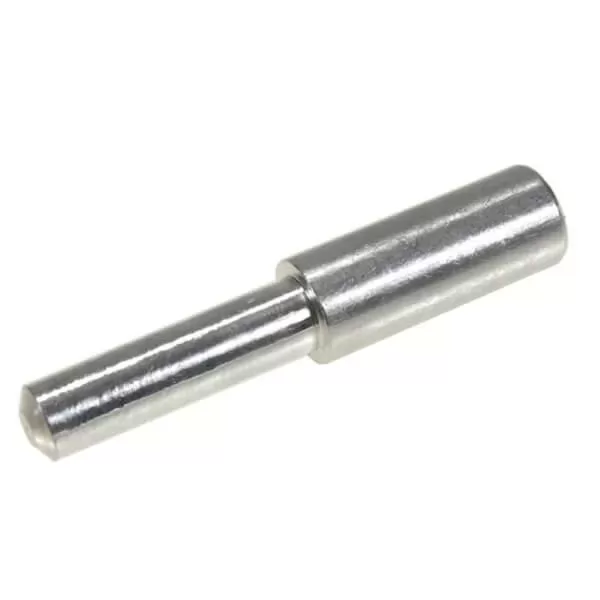
- With pliers, or with the hex key, you can pull the entire anchor out of the hole. If the anchor is partially raised, pry it out with a flathead screwdriver.
- Lubricate the anchor, then grasp it firmly with locking pliers in one hand, or place in a small vice, and turn it with your other hand.
- If the anchor spins but still functions well, you can just tamp the anchor back in place (be sure to use a proper tamping tool), or replace it with a shiny new brass cover anchor tamped into the deck.
Methods to Remove and Replace Pool Cover Anchors
Chip and Pry
With a flat head screw driver and a small maul, chisel out the concrete around the top of the anchor. In some cases, you only need to chip out on one side – then tap your screwdriver in under the lip of the anchor body and push downward. If you chip out enough of the concrete around the upper lip, you can pry the anchor out. You only need to remove 1-2 mm of concrete around the anchor, or sometimes just on one side.
Pry up the anchor with a large flathead screwdriver. Once you have chipped around the body of the anchor, and exposed the wider top ring of ridges, push down on the screwdriver to pry the anchor out of the hole. Another tip is to spray some WD-40® type of lubricant around the anchor body, after you have chipped the concrete from around the anchor, but before you start prying, to help loosen it from the hole.
Pull up on the anchor with vice grips. Use all your force to lock onto the anchor as tightly as possible. Straight pliers won’t grip tightly enough in most cases. Once you have a good grip on the top of the anchor, push the pliers back and forth to work the anchor out of the hole. As mentioned above, adding a light lubricant around the anchor, after chipping, can be helpful. You can also a large screwdriver under the Vice Grips, while locked onto the anchor, as a pry tool to lift the anchor.
Tap and Tug
Drill out the hex key hole, then use the 1/4″ tap to create threads in the hole. Place the cylinder over the anchor, slide the bolt through the cylinder and plate, and tighten it. Tighten the nut against the steel plate, and it will raise the anchor out of the hole.
Tap and Turn
Lubricate the anchor with WD-40, or you can also use a multi-purpose lube like 3-in-1 oil, or any other light, penetrating oil. Lubricate inside the anchor body, or between the threaded insert and the housing or anchor body. Initial lubrication is important, but it can be helpful to re-lube again, once you can raise the anchor insert slightly.
Tap the hex key with a hammer, while pulling the key in a counter-clockwise direction. This helps the key seat fully into the hole and generates heat.
Tap a flathead screwdriver into the corners of the hex hole using a hammer. A screwdriver with a wide body or hex stem works best. You can use vice grips on the screwdriver stem to turn the it and pull up the anchor insert.
Drill Another Hole
Another option would be to re-drill a new cover anchor, adjacent to the old anchor. Score or paint the old anchor with nail polish for easy identification. If the threaded insert piece is removed or missing, and you want to fill in the old anchor body, you can use pool caulk or concrete patch.
Sturdy anchors are key to ensuring your safety cover protects your pool. If you’re dealing with broken or damaged cover anchors, don’t stress! This guide will help you get your safety cover locked and loaded in no time.

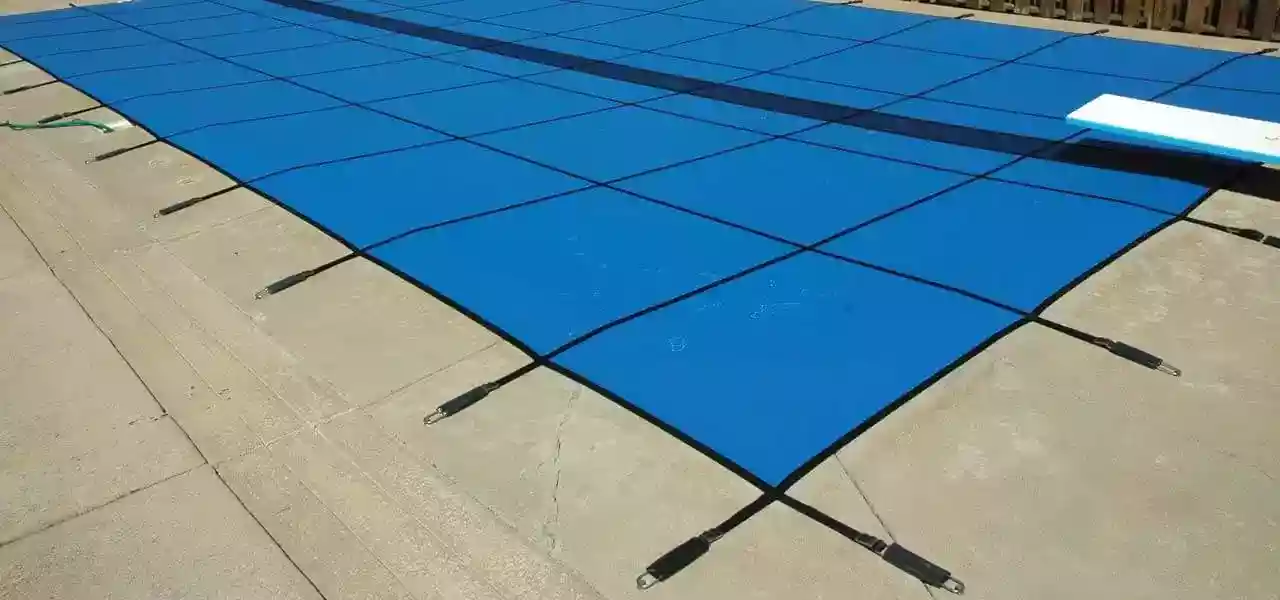
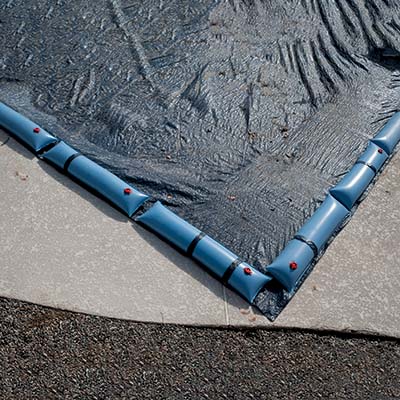
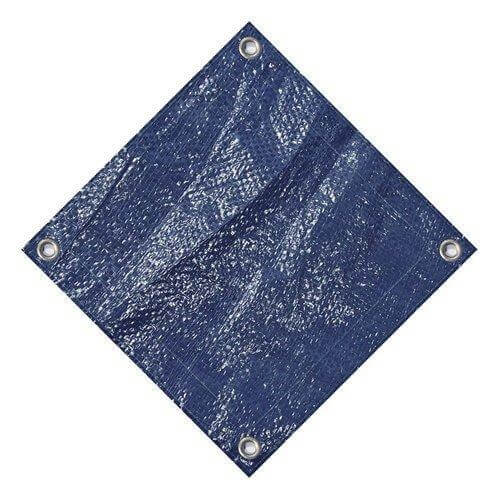
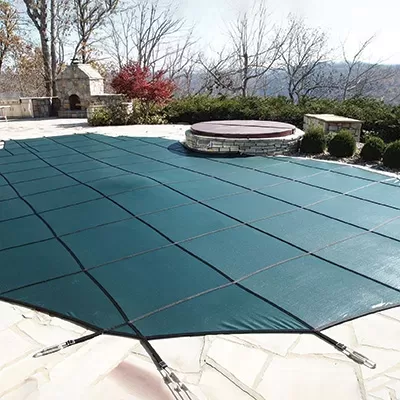


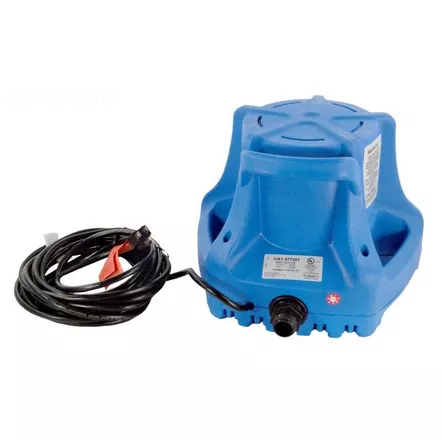

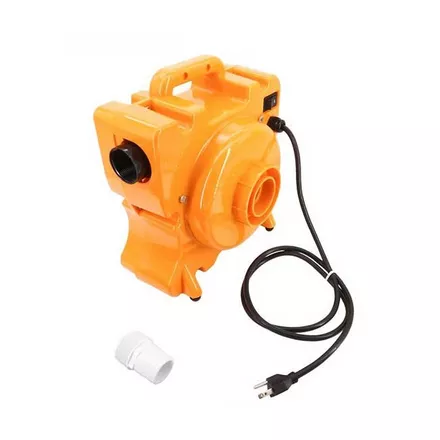
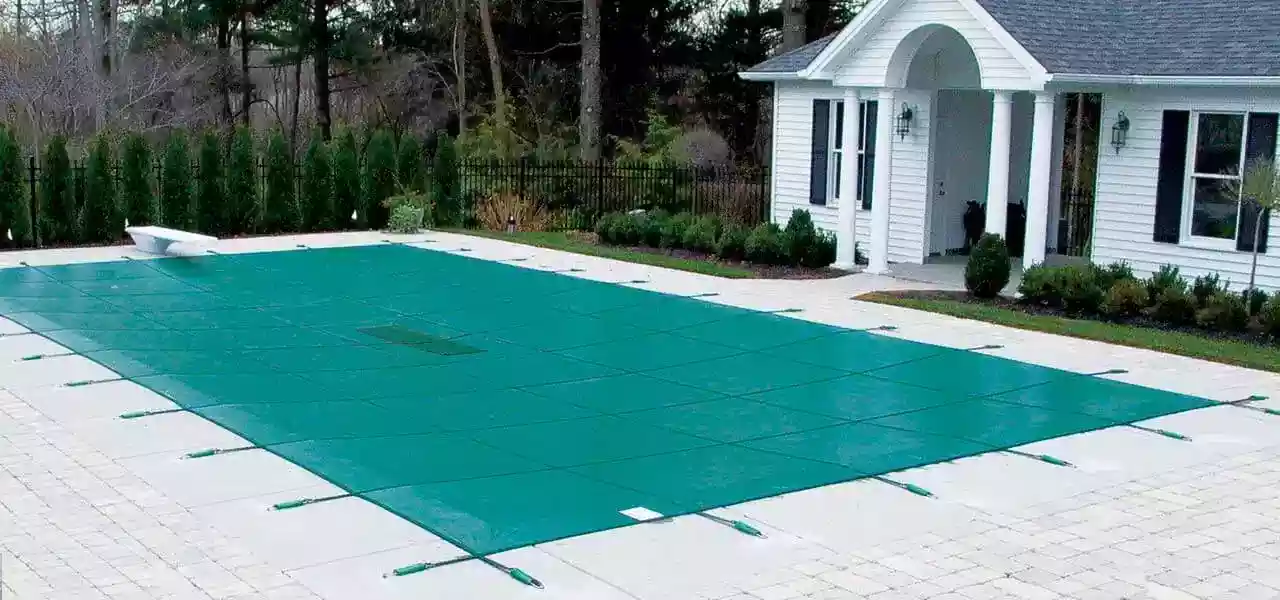
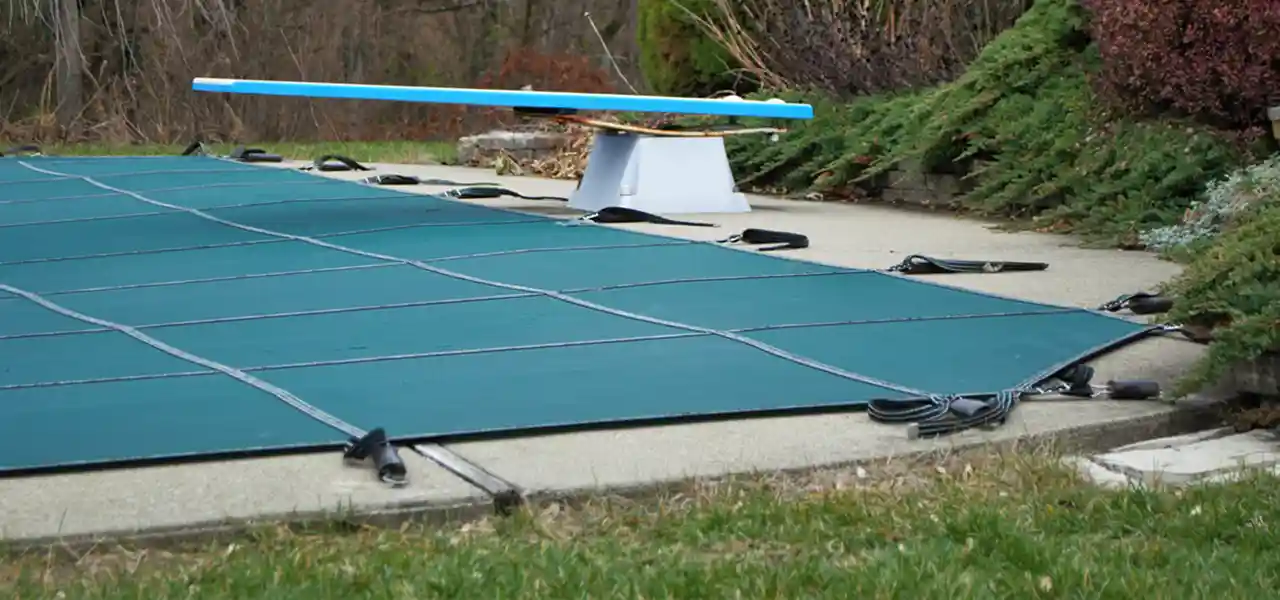
Hello, great Q and A here! I purchased a water warden safety cover with these brass anchors. No issue installing them however the anchors didn’t come with brass beauty rings. I purchased these separately on Amazon. Everything I read said these anchors are pretty standard size requiring a 3/4 hole drilled in the concrete For the anchor (mine were also 3/4 hole size so I’m thinking I have the standard anchor) and these brass rings fit all safety cover brass anchors. Problem I’m having is the hole size in the beauty ring is just a touch to large and the anchor bolt head slips through (rendering these rings worthless). Have you ever heard of this issue? Can different size rings be purchased? If so I can’t find them anywhere. Even thought about having a machine shop custom making them, but I’m sure that won’t be cost effective. Thank you for any help.
Hi Brian, I think these rings are supposed to be installed before you put the anchor into the concrete? Either that, or you would need some that are smaller, perhaps the manufacturer of your cover would have the right size?
How far below the pool deck are anchors ok to be installed? We have some that are 1/4″ below the concrete, uncomfortable to walk on.
Mark, they are supposed to be flush with the deck, in a perfect world. If they are 1/4″ below, the holes may have been drilled too large, or rounded out too much. Or if flagstone deck, the bottom may have popped off during drilling, allowing the anchor to fall-in.
I love the tip about using a large flathead screwdriver to turn your anchor. I never thought about using it that way. I’ll have to try that because my pool anchor is stripped pretty badly.
Have two that I can’t screw down that are in the up position, stuck in the up position. Used pb blaster, vice grips, channel locks, will not budge!!!! Any other ideas? I just want to screw it back IN
How about heat? With a small propane torch, heat up the anchor? Or, did you try WD-40 or similar light, penetrating oil? If nothing works, extract the entire anchor to replace….
Hi – Several of the anchors just spin in their holes. I can pull them completely out of their holes with my fingers. I don’t think that just re-tapping them into their holes again will make them stop spinning. Can you recommend an adhesive to hold the anchors? Or another solution? GREAT INFORMATION, and THANKS!
Hi Kenneth, generally tapping is the best method, but you could use some sort of silicone I suppose. Not sure how well it would work, and if it were me, I would end up making a huge mess, lol. There really is no adhesive that comes to mind, but if the hole is much larger than the anchor width, there may be room to fit some sealant in there. You could use cement products, or an epoxy sealant, or silicone – Or, drill a new anchor next to the old one, and fill the old hole with cement or caulk.
Can I use 3/4 electrical metal conduit cut down to 12 inch lengths with brass metal anchor inserted into one end as a anchor for pool safety cover in brick pavers. I know the pool cover suppliers sell a metal pipe for this purpose but they run approximately 15 dollars apiece
Hi Tom, yes you can! Copper makes a nice tube, but can’t take the hammer beating on the end. Steel conduit works well, even steel gas pipe works well. Just be sure that the anchor fits snugly in the top of the tube and won’t fall into the tube. It’s OK if it fits loosely in the top, or spins slightly.
Hi, We have a very old concrete block pool deck. We are resurfacing it with rubber mixture, similar to that used on playground surfaces. We had very few options available, other than breaking up the concrete blocks on the current deck and starting all over. We are in our 70″s, and the expense of doing this at our age was unrealistic. Our dilemma is that our anchors will sit at least 1/2″ to 1″ below the new rubber surface. I have looked for longer anchors for our pool safety cover, but no luck:( Do you have any suggestions to modify the existing anchors and their housing? Thank you for your help.
Hi Linda, good question. Are you sure that the rubber coating will be even 1/2″ tall? Ask them again, and I would suggest that the installers bevel the rubber coating around each anchor a bit. That may work just fine. If not, there are extended brass inserts, I have seen them online – if you search “Extra Long Brass Anchor Insert with anchor body for safety cover”, you will find them – a bit pricey to do all of them perhaps, at $11 each. If you visit a good hardware store, they may be able to find you something in SS or brass that would work well – a bolt that could be used only during winter. Might have to special order them, but should cost just a few dollars each. Good Luck!
Can I just core through the slab and backfill with sand or fine gravel to get the 1-5/8″ depth hole for the a anchor? The top of the anchor seems to be what is holding it in place, why would the depth matter? I have access to a core drill, and am having a hard time with the regular concrete bit making a clean hole. Thanks!
Hi Brian, yes a Core drill will make a cleaner hole, for sure. Depth doesn’t really matter, most holes are drilled deeper than what is needed, and sometimes, you can punch thru the bottom of the deck, no problem. No need to backfill a hole drilled deeper than the height of the anchor, you are correct, the top 1/8″ holds it in place, not support from below.
Great, you ate awesome! I have one more question? That I think you touched on below. But just to be sure, is it ok if I need to have a couple of the straps (at 2 of the main corners) about 6-8 inches shorter than all the rest? This is due to pool fence poles in the way. Thanks!
Hi, absolutely no problem with that Brian. Safety cover straps may look better aesthetically… when all the straps are the same length, but that’s not always possible. Straps are adjustable from 8″ (the length of the spring only), to as far out as 24″ when fully extended. Sliding the buckle down the straps allows for the farthest reach. In your case you can run the spring up close to the cover without worry or concern, sure.
I had construction on our pool deck and when they put overlay they covered 5 anchors, is there a way of finding them before we drill new ones? We just don’t want to drill on the old anchors.
Hi Claudia, I suppose you could use a metal detector, however a very small one would be needed, to sense just the anchor and not the steel in the concrete deck, a few inches lower. Perhaps a ‘stud finder’ can be used, normally used to locate wall studs, for hanging pictures and such. Otherwise, a better method may be to install the cover fully, and see where the cover straps line up, then shorten or extend the cover strap a few inches, and redrill. If you do happen to hit the old anchor, no problem, it will probably just push thru the deck to the ground beneath.
Hi, thank you for this. Great information. Do you have information for how to remove and replace the cups for a swimming ladder that have corroded from salt water? The original cups were installed for chlorine about 12 years ago, but the pool has since been converted to salt about 3 years ago. Thanks.
Hi Mitch, are you speaking of the ladder anchor sockets, set into a concrete deck? Those are usually made of brass or aluminum, so the socket itself shouldn’t rust or corrode (much). The steel bolt of the wedge assembly may corrode more. Have you tried using a sacrificial zinc anode? We have many to choose from, one style bolts onto the ladder rail. Anyway, if you wanted to replace the ladder anchor sockets with the Saftron thermoplastic anchors, you can… what is normally done is to cut out the entire ‘pad’ where the ladder connects, or removing a 2′ x 1′ section. Two new sockets are placed, usually set onto a 20″ channel, to keep them properly aligned, plumb and level to each other, and to line up with the rails properly. Once set level and perfect, pour new concrete, with a small crack joint or expansion joint between the new pad, the old concrete, and the pool wall. You can also cut out two smaller 6″x6″ sections and replace each anchor individually, but use extreme care to set the anchors correctly, just a few millimeters off, and the ladder will not be as stable, ending up a little wobbly.
Rob Cox, thank you for your blog post.Really thank you! Awesome.
Dave, I have a 3″ round x 2″ deep concave hole spot (varmint?) in the bottom of my 24’above ground pool liner of 10 years old . I have a 5’x5′ “underwater” patch but I am afraid if I cover this spot and the water remains trapped in this concave hole that it could turn to solid ice this winter and maybe expand and create a hole where itn’t one now. Do you have any advice?
Hi Earl, only the top surface of the pool will freeze, the water beneath the liner will stay liquid. You could fill the hole however before patching, with sand – just fill up a ziploc bag full of sand and pour it in first (underwater), to fill-up the hole, then patch it.
Thanks for great tips I was able to un-seize the anchors
Now, replacement screws I got online are just a tad too thin 🙁
Is there a brand that is just a little bigger in diameter?
Hi Tom, if you mean you are replacing the entire anchor and the body is smaller than the old anchor? All brass cover anchors are the same size – the internal threaded part, the male insert will vary in thread size and width, so not all inserts are interchangeable, but all anchors should be 3/4″ OD, at the top 1/8″ of the anchor body, which holds it in place. It’s possible that the deck hole (in the concrete) has become enlarged with all the yanking, etc. YOu could use some epoxy sealant, mortar, or even duct tape I suppose, to shim up the extra space? If you want to replace just the insert, try to find the exact replacement anchors, (cantar, loop-loc, meyco, etc) and it will fit…
Hi, There is a new Anchor Removal Tool on the market that will remove both pop-up and screw type. The tool is known as “Anchor Yanker.” Just a few of the reasons why this new tool is different is it’s very user friendly, the cost, etc., but most important there is virtually NO DAMAGE TO THE SURFACE. I welcome anyone to check us out at: http://www.anchoryanker.com. Feel free to contact me with questions and/or comments. Thank you
I rec’d a new set of brass anchors with my new (replacement)loop lock cover … the old ones are working fine but look 30 years old. So I’m thinking of simply replacing the screw in part of the anchor and get a new brass collar for each. Is there any way to keep them looking almost new year?
Thanks for the advice !
Hi, no need to replace the anchors, unless they are sticky or non-functional, and in many cases of non-function, the entire anchor (both halves) need to be replaced. The brass anchors will tarnish within months, I don’t know of a way to keep them shiny, other than polishing them with Brasso 🙂 – so save yourself the work! BTW, you can order new safety covers without new hardware (springs/anchors), but the savings are small, a discount of $50 or so… if you have a lot of them new anchors, you may be able to sell them on Craigslist for $2 each or so…
How can I reduce chipping around the top of the anchor hole.lm using a 4 point bit that cuts a perfect hole but ehen I sink the anchor I get chipping. Some arent bad but some are very bad.
Great question, chipping around the hole when drilling or when tamping the anchor can be avoided, sometimes. First thing – most important, is to use a sharp bit, dull bits will chip more*. And, new concrete will chip more than old concrete. Secondly, after drilling the hole, but before fully retracting the bit, rotate the drill in a circular motion, just once or twice, about a 12″ dia, to round out the top 1/4″ of the hole. This will avoid the tamping chipping that you are experiencing, but will sometimes create chipping too, depends on the deck really, aggregate decks are less ‘chippy’ than broom finished, and the more air entrained into the top surface, the more chipping can occur around the anchor hole. Stone decks, and large pavers are – most types, are very hard and don’t chip as easily. I’ve used water before too, just a hose trickling around the bit, but not sure if that helps actually.
* in my experience a hammer drill bit is ‘sharp’ for 250-400 anchors, depending on the quality of the bit. When renting a hammer drill and bit, ask for the sharpest (newest) bit they have…
I have an empty hole where the anchor was. Can I epoxy fit a new anchor into the hole?
Hi Mark, if the anchor has fully come out of the hole, you can just tap a new anchor into the hole, no epoxy needed – the top 1/8″ of the anchor body is wider than lower parts, so it press fits into a 3/4″ hole in the concrete. Just a few hammer taps to set in place.
Do not use epoxy, you will hate yourself if you need to remove that anchor in the future and you pull a significant portion of your deck up with the anchor.
How do you put the round back in the end of the pool cover spring so the installation and removal tool will fit in? Some of mine are stretched out and I am tired of replacing them. Thanks, Mark
Hi Mark, if you bang the metal tip on the concrete, it will reduce the oblong-ness, making it a bit more round, or round enough to get the tool through. Adding heat from a small propane torch would make it more bendable. (but be careful around the cover, with fire!). Keeping enough water in the pool for heavy snows prevents out-of-rounding, and springs that aren’t too tight, but half compressed or less. It’s best if water level is only 6″ below the tile when the snow hits, for the cover of average tension.
Hi, is it safe to spray the anchor and screw with WD-40 every season (to keep them lubricated) or should the oil only be used if the screw is stuck?
Actually it can only be a good thing. WD-40 can discolor the concrete deck around the anchor, if that concerns you. The very best thing to do would be to remove the male anchor insert fully, and hose out the body with a strong stream of water. Then blow out the water with a leaf blower, or shop vac, and allow to dry overnight. Then apply a light lubricating oil (like WD-40), or you can use a dab of a heavier bodied lube like Aqua Lube.
What is the breaking load for the assembled brass anchor ?
Hi – I have no idea, but it’s several tons I’m sure. Safety cover STRAPS break-test at over 4000 lbs, not sure about the anchor, but it should be more than the strap.
[…] Our blog today is not about How to Install a Safety Cover, we’ve covered that before, here. We’ve also covered brass anchor problems that a safety pool cover owner may encounter…here. […]